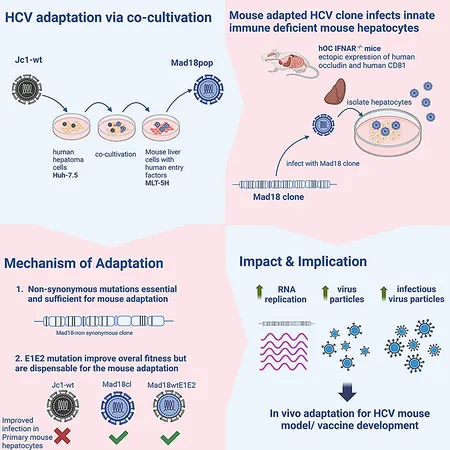
Breakthrough in Hepatitis C Research: New Mouse-Infecting Virus Variant Provides Hope for Vaccine Development
2025-01-28
Author: Sarah
In a remarkable advancement that could reshape the landscape of hepatitis C virus (HCV) research, scientists in Hannover, Germany, have successfully engineered an HCV variant capable of infecting mouse liver cells in vitro.
This groundbreaking development could significantly aid in vaccine research, a challenge that has persisted for decades due to the virus's exclusive natural host: humans.
The World Health Organization estimates a staggering 50 million people worldwide are living with chronic HCV infections.
Despite decades of research and the introduction of effective antiviral therapies about ten years ago, HCV remains a critical health concern, with approximately one million new infections and over 250,000 related deaths each year.
The urgent need for an effective vaccine is underscored by this grim statistic, yet progress has stalled largely due to the inability to conduct rigorous efficacy studies in widely used laboratory animals, particularly mice, which do not harbor the virus.
Research led by Dr. Julie Sheldon at TWINCORE's Institute for Experimental Virology has taken a significant step forward.
By leveraging the inherent diversity of the HCV RNA virus—characterized by high rates of mutation and replication—the team successfully adapted the virus to infect mouse cells.
"This new HCV variant not only infects mouse liver cells but also replicates effectively within them," says Dr. Sheldon, who served as the primary author of the impactful study published in JHEP Reports.
In the process of adaptation, the researchers identified 35 changes in the virus's proteins, making up only about 1% of its genomic structure, yet allowing it to maintain 99% similarity to the original HCV strain.
However, successful infection in mouse liver cells requires the presence of essential human cell entry factors, such as CD81 and occludin, along with a restricted innate immune response in these cells.
The implications of this research are profound.
For the first time, scientists have demonstrated that HCV can be engineered to overcome the species barrier between humans and mice.
"This brings us a major step closer to developing a mouse model for HCV," remarked Prof. Thomas Pietschmann, Director of the Institute.
He emphasized that prior attempts to create a vaccine have faltered due to the absence of a suitable animal model for research.
This innovative approach not only opens new avenues for studying the virus's mechanisms but also paves the way for potential breakthroughs in vaccine development.
The research community is buzzing with excitement as the prospect of a viable HCV vaccine, which has eluded scientists for years, now appears to be on the horizon.
Stay tuned as this story develops—could we be on the brink of a major medical breakthrough against hepatitis C? Only time will tell, but researchers are hopeful that these findings will lead to an impactful vaccine that could save millions of lives worldwide.

 Brasil (PT)
Brasil (PT)
 Canada (EN)
Canada (EN)
 Chile (ES)
Chile (ES)
 Česko (CS)
Česko (CS)
 대한민국 (KO)
대한민국 (KO)
 España (ES)
España (ES)
 France (FR)
France (FR)
 Hong Kong (EN)
Hong Kong (EN)
 Italia (IT)
Italia (IT)
 日本 (JA)
日本 (JA)
 Magyarország (HU)
Magyarország (HU)
 Norge (NO)
Norge (NO)
 Polska (PL)
Polska (PL)
 Schweiz (DE)
Schweiz (DE)
 Singapore (EN)
Singapore (EN)
 Sverige (SV)
Sverige (SV)
 Suomi (FI)
Suomi (FI)
 Türkiye (TR)
Türkiye (TR)
 الإمارات العربية المتحدة (AR)
الإمارات العربية المتحدة (AR)